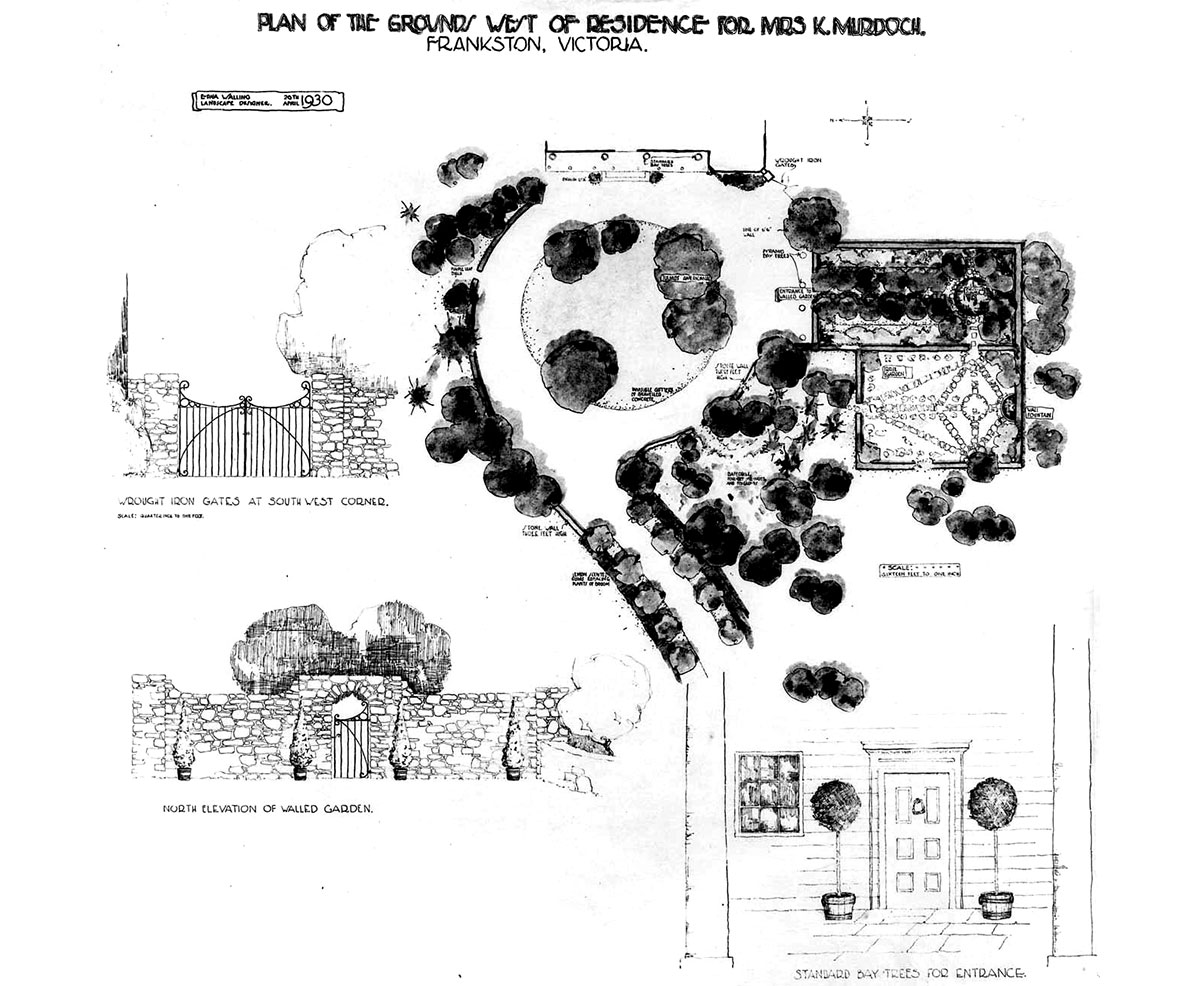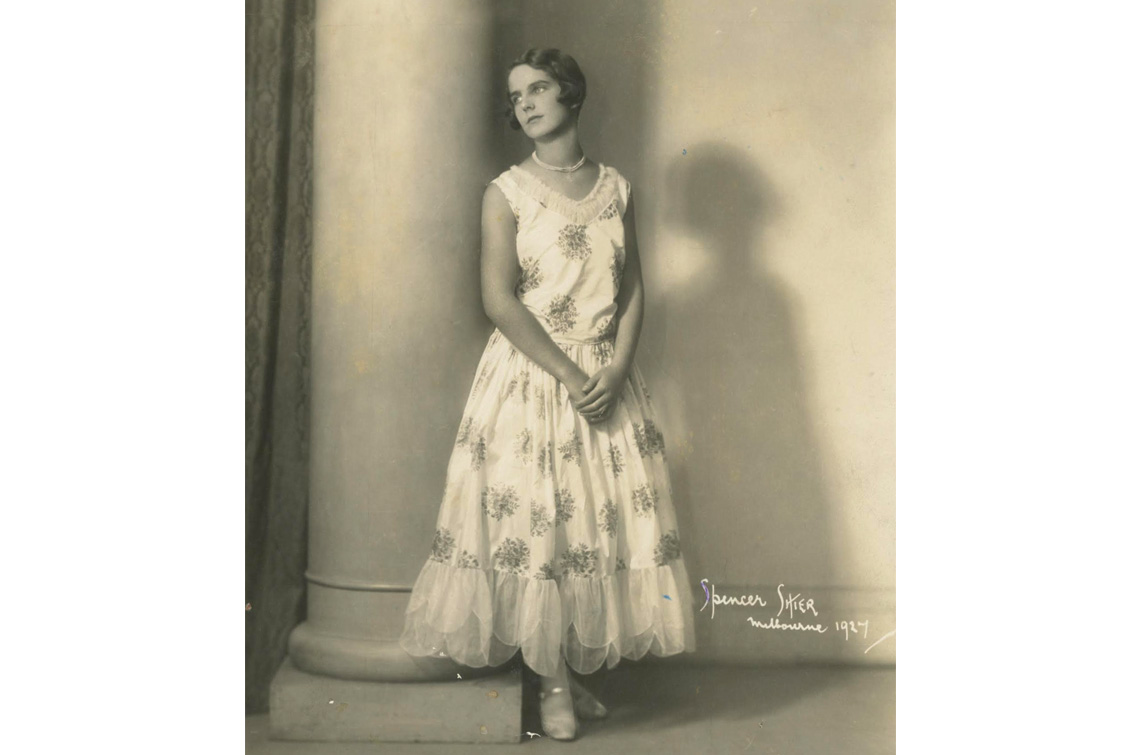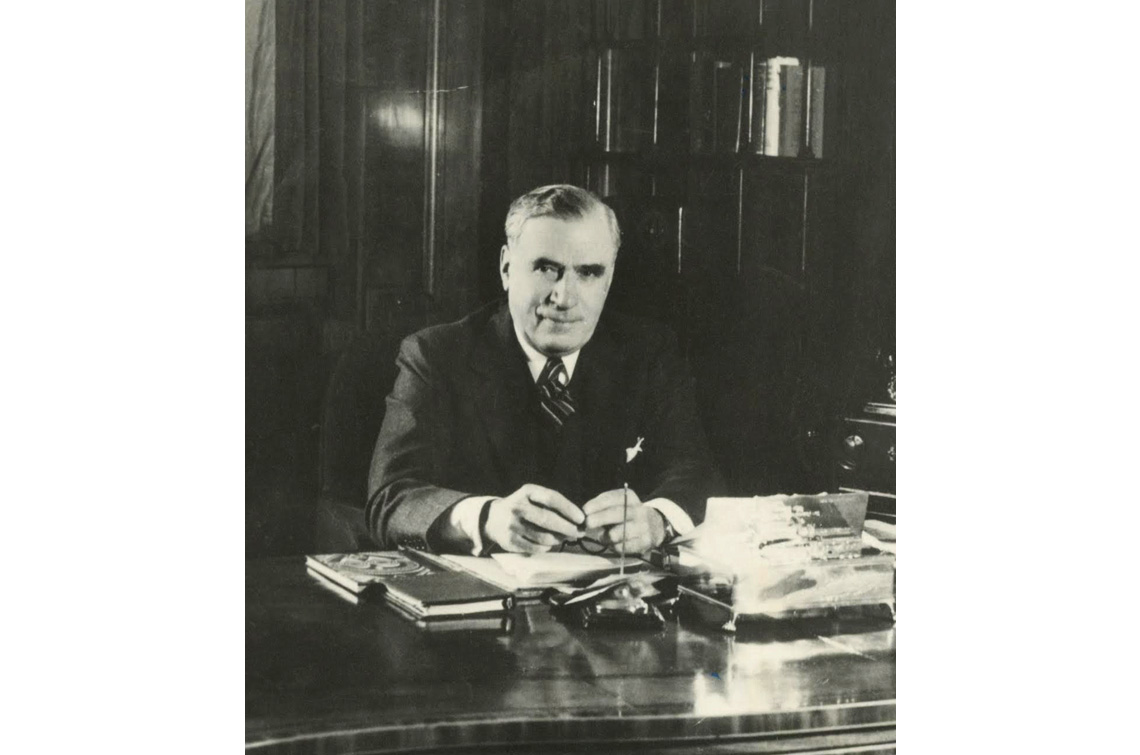The Story
In 1928, journalist and newspaper executive Keith Murdoch gave his 19-year-old bride, Elisabeth Greene, a small farm as a wedding present. Elisabeth loved the property at first sight, but Murdoch, a perfectionist, soon engaged leading design professionals to revitalise the modest weatherboard cottage and old-fashioned garden into a weekend retreat that was suitable for his family and for entertaining.
Soon afterwards, whilst Sir Keith and Dame Elisabeth were travelling overseas, Harold Desbrowe-Annear designed an extension for the cottage, adding striking white pillars to the front of the home. Upon their return, Dame Elisabeth was distressed to find an ostentatious renovation and in the coming decades set about ‘burying the house within the garden’.
Percy Meldrum designed the stables, which were built during the Depression by local men, who had no other work at the time. Sir Keith had over-extended the budget with Desbrowe-Annear’s work but went ahead with the construction of the Stables in order to provide the men with much needed income. Upon construction the Stables became an instant focal point and settled into the landscape far more readily than the alterations made to the original house by Desbrowe-Annear.

In 1930, Sir Keith appointed Edna Walling to devise plans for new gardens; including a Walled Garden. Dame Elisabeth’s name is on the original plan but she was not consulted by Walling. Walls were built and specific trees planted, however an intended wall fountain was never constructed due to the lack of readily available water.
In 1944, a potentially devastating bush fire tore through Cruden Farm, almost engulfing the house and destroying hundreds of plants and trees in its path. Miraculously, the fire stopped just short of the house but not before it had killed many of the wondrous lemon scented gum trees. these were the trees planted by Sir Keith and Dame Elisabeth as per Wallings’ plans, that created the iconic driveway from the main entry up to the house.
As a busy family home, the onsite dairy provided ample amounts of milk, cream and butter, and the vegetable gardens yielded produce for both Cruden Farm and the city household. On a weekly basis a large basket of fresh produce (and flowers) was transported via train to Armadale station for use in town. During the 1930s, the property welcomed many guests and staged numerous picnics and excursions on horse back. In amongst the activity of family and visitors, Dame Elisabeth maintained a rigorous watering schedule early in the morning and in the evenings.
Beyond the formal gardens, lies the ‘outer garden’ and the stunning lake that Dame Elisabeth created in 1987. Behind the lake are numerous Oaks, some of which were planted by Dame Elisabeth’s daughters and grand-daughters in the late 1980s. Cruden Farm continues to evolve as a place with activities sympathetic to Dame Elisabeth’s long term plans for continual improvement.
Website by Work Art Life & The Mighty Wonton



